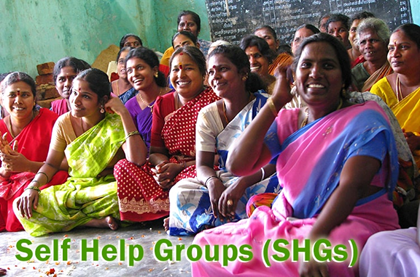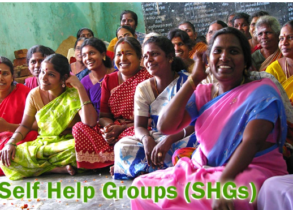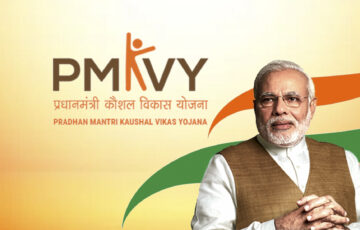Self-Help Groups (SHGs)- 1.0
Relevance
- GS Paper 1 Role of women and women’s organization, population and associated issues, poverty and developmental issues, urbanization, their problems and their remedies.
- Social empowerment, communalism, regionalism & secularism.
- Tags: #SHGs #womenempowerment #SEWA #currentaffairs #upsc.
What are Self-Help Groups (SHGs)?
Self-Help Groups (SHGs) are community-based organizations that have played a pivotal role in driving social and economic change, particularly in rural and marginalized areas. They serve as a platform for individuals, often women, to come together, pool their resources, and collectively work towards financial independence and empowerment. In this comprehensive exploration of SHGs, we will delve into their functions, genesis, and examine a few case studies that demonstrate their profound impact.
Functions of Self-Help Groups (SHGs)
- Microfinance and Savings: SHGs serve as financial intermediaries for their members, encouraging regular savings and facilitating access to microloans. This financial support enables members to invest in various income-generating activities, such as small-scale businesses, agriculture, and handicrafts.
- Skill Development: SHGs promote skill development among their members, aiming to enhance their employability and income-generating potential. This includes training in various areas like tailoring, animal husbandry, and agro-based activities.
- Social Awareness: SHGs often act as catalysts for spreading awareness on critical social issues, such as health, sanitation, and education. They conduct sessions and workshops to educate members and their communities on these matters.
- Collective Bargaining: Through their collective strength, SHGs enable members to negotiate better prices for their products and services, empowering them economically and ensuring fair returns for their efforts.
- Women Empowerment: SHGs, predominantly composed of women, promote gender equality and women’s empowerment. They provide a platform for women to voice their concerns, gain confidence, and play active roles in decision-making.
- Community Development: SHGs contribute to the holistic development of their communities by engaging in social activities, such as building infrastructure, supporting education, and healthcare initiatives.
- Entrepreneurship: Many SHGs evolve into small-scale entrepreneurial ventures, collectively managing businesses and participating in local markets.
Genesis of SHGs
Historical Background
Pioneering SHGs in Bangladesh
- The inception of Self-Help Groups (SHGs) can be traced back to the Gramin Bank of Bangladesh. In 1975, Professor Mohammed Yunus, an economist from Chittagong University, established the world’s first SHG. This transformative endeavor marked the birth of the SHG movement.
Global Expansion of SHGs
- SHGs quickly became a model for rural microfinance in many regions of the world. The significance of SHGs gained international recognition in 1997 when, during the World Microcredit Summit in Washington, developed and wealthy nations pledged their commitment to utilizing microcredit facilities in rural areas as a strategy to combat rural poverty.
SHGs’ Genesis in India
- The initial organized effort in this direction began in Gujarat in 1954 when the Textile Labour Association (TLA) of Ahmedabad established a women’s wing. Its purpose was to organize women from households of mill workers and provide training in essential skills such as sewing, knitting, embroidery, typesetting, and stenography.
- In 1972, this initiative took on a more structured form when the Self Employed Women’s Association (SEWA) was founded as a Trade Union under the leadership of Ela Bhatt
Their emergence is rooted in several key factors:
- Economic Necessity: In impoverished regions, individuals recognized the need for financial support to escape poverty. Traditional banking institutions were often inaccessible to them, leading to the formation of informal savings and credit groups.
- Government Initiatives: The Indian government recognized the potential of SHGs in poverty alleviation and community development. Consequently, various programs and initiatives were launched to encourage the formation and growth of SHGs.
- NGO Interventions: Non-Governmental Organizations (NGOs) played a pivotal role in nurturing SHGs. They provided training, financial support, and organizational assistance to help SHGs flourish.
Case Studies
1. Kudumbashree in Kerala:
- Genesis: Kudumbashree, one of the largest women’s empowerment programs in India, was launched in Kerala in 1998. It aimed to eradicate poverty and promote women’s participation in local governance.
- Functions: Kudumbashree operates through a network of SHGs, engaging in microenterprise activities, poverty reduction, and women’s empowerment.
- Impact: Kudumbashree has empowered thousands of women in Kerala by providing income-generating opportunities. It also plays a crucial role in local governance, creating a bottom-up approach to development.
2. SEWA (Self-Employed Women’s Association) in Gujarat:
- Genesis: SEWA, founded in 1972, is a prominent trade union that transformed into a powerful social movement. It began as a small gathering of women laborers in Gujarat.
- Functions: SEWA organizes women workers across various professions, offering support in areas like microfinance, healthcare, and advocacy for labor rights.
- Impact: SEWA has significantly improved the socio-economic status of its members, enabling them to access financial services, affordable healthcare, and secure livelihoods. It also emphasizes collective bargaining for labor rights and has created an influential voice for women in the labor sector.
3. NRLM (National Rural Livelihood Mission):
- Genesis: Launched in 2011, NRLM by the Ministry of Rural Development is aimed at reducing poverty through the promotion of SHGs and their federations.
- Functions: NRLM focuses on building strong SHGs, providing them with financial support, and fostering self-employment opportunities in rural areas.
- Impact: NRLM has played a significant role in the creation and strengthening of SHGs across India. It has successfully promoted financial inclusion, entrepreneurship, and rural development.
In summary, Self-Help Groups (SHGs) are an invaluable asset in India’s journey towards economic and social empowerment. These community-based organizations facilitate savings, microfinance, skill development, and social awareness. They empower women, promote collective bargaining, and contribute to overall community development. SHGs have evolved as a result of economic necessity, government initiatives, and NGO support. Through case studies like Kudumbashree, SEWA, and NRLM, we witness the transformative potential of SHGs, which are driving positive change in the lives of many across India.
| Mains Question
“Self-Help Groups (SHGs) have emerged as a powerful tool for promoting socio-economic development and women’s empowerment in India. Analyze the functions of SHGs and their role in community development. Discuss the genesis of SHGs and illustrate their impact through relevant case studies. How have SHGs contributed to addressing issues related to poverty, gender equality, and local governance in India?” |








